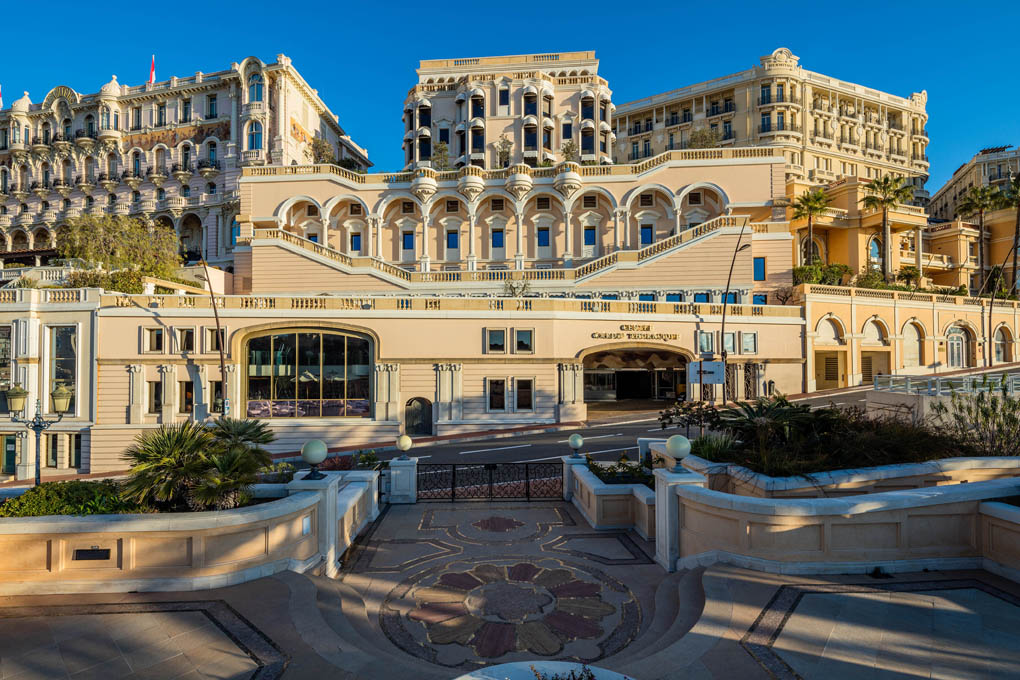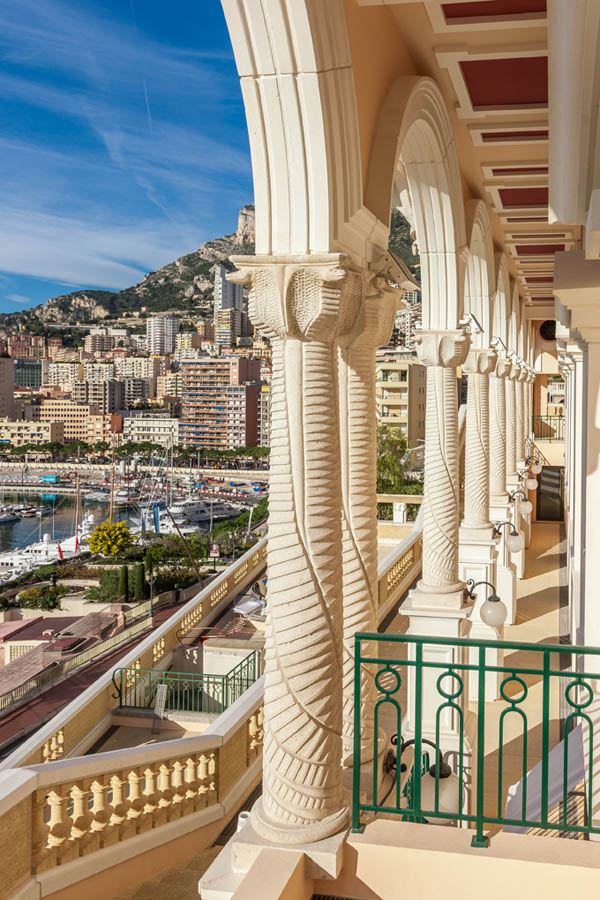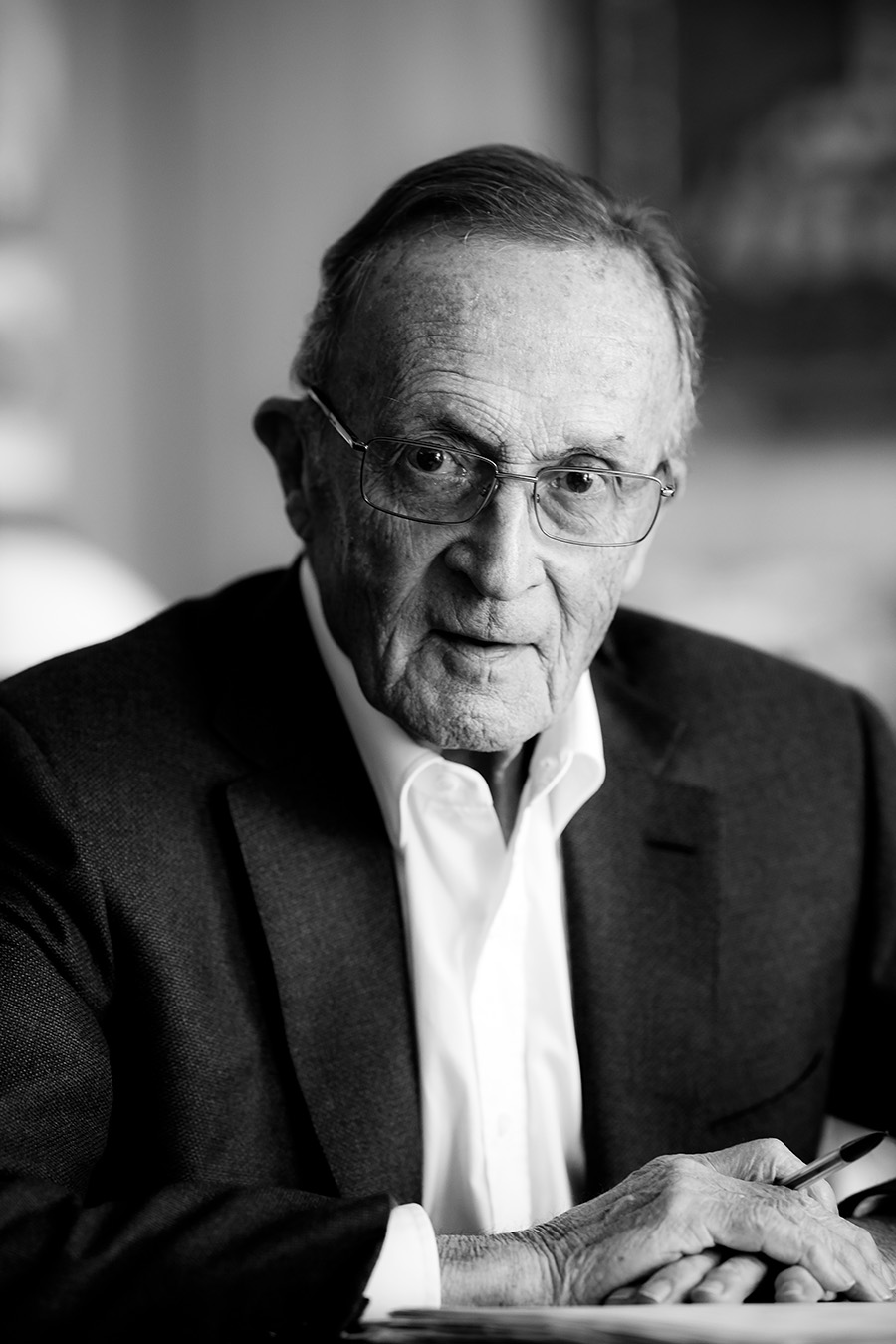Before the creation of the Monaco Cardiothoracic Centre, many patients from Europe and the Mediterranean had to travel to distant or overseas cardiac surgical centres.
This Centre, which is open to international teams, has enabled patients to benefit locally from the care and expertise of international specialists, sparing them the risks, fatigue and isolation associated with such travel, which is now carried out by our doctors.
The Monaco Cardiothoracic Centre was :
- conceived in 1978,
- accepted in principle by the highest Monegasque authorities in 1981,
- planned from 1982 to 1984,
- built and equipped in 25 months, from March 1985 to April 1987.

The project was to be built in space previously occupied by the “Villa Auguste”, located in the gardens of the Hermitage Hotel.
Having reached maturity, the project combines two contrasting spaces, interior and exterior, in which the architect Charles-Jean Schmeltz “embodied modernity” :
The interior is resolutely contemporary, opened by large bays overlooking the port of Monaco. The Centre combines transparency, a sense of space, comfort and perfectly adapted medical devices. The interior design is inspired by the influence of contemporary designers F.L. Wright, Mies Van der Rohe, Le Corbusier, McIntosh, Breuer.
The exterior urban space contrasts with the interior through its personality, combining mouldings, columns, cornices, reflecting the euphoria of the surrounding facades.
The caduceus stylized by the architect Charles-Jean Schmeltz can be found on the capitals of the classical columns, on the flooring of the 6th floor, in the lift, on the handles of the entrance doors and the restaurant.
The architecture was designed to meet the requirements of healthcare services: each floor brings together a different speciality.
The CCM was opened in April 1987 thanks to the help and support of His Serene Highness Prince Rainier III and the Monegasque authorities.
The Centre differs from existing structures by its openness to international expertise and by the quality of hospitality offered to patients of all origins.
Nowadays
Since its creation, the building has continued to evolve through successive enlargements, and today the Cardiothoracic Centre represents :
- 13,000 m² on 12 levels
- 57 beds
- 15 intensive care beds
- a 200 m² restaurant on 2 floors
When the Monaco Cardiothoracic Centre was conceived in 1982, it represented a new and original concept in terms of its international character, allowing several internationally renowned medico- surgical teams to treat patients from Europe and the Mediterranean region in one place.
What is more, it also met the Côte d’Azur region’s need to increase its capacity in cardiology beds. This need was very well perceived by His Serene Highness Prince Rainier III of Monaco, his Government, and all the Authorities and Constituted Bodies of the Principality.
Opened in 1987 and created by Professor Vincent Dor and Doctor Jean-Joseph Pastor, the CCM is a centre that is exclusively dedicated to thoracic and cardiovascular diseases. Its original concept is to allow patients from all social, geographical and cultural backgrounds to benefit from the expertise of permanent or international medico-surgical teams in one place.


Professor Vincent Dor, founder with Dr Jean-Joseph Pastor of the CCM passed away on December 29, 2023 at the age of 91.
The Honorary Founding President of our Center, has left us, after having imagined, designed and built, alongside Doctor Jean-Joseph Pastor, an innovative Facility. Since April 1987, he has contributed to making the CCM an internationally renowned Center of Excellence and Reference. His unwavering commitment and strong values have shaped the Center’s uniqueness.
Born in Marseille in 1932, Professor Dor studied medicine there. He was appointed intern in 1955, then Professor of thoracic and cardiovascular surgery in 1965. It was during his stay in the United States, at Stanford, with Professor Norman Shumway, that he was introduced to true cardiac surgery, meticulous, rigorous and effective.
Back in France, he tried to establish this «Stanfordian» organization in Marseille, then created the department of thoracic and cardiovascular surgery at Nice University Hospital’s Arnault Tzanck Institute in 1972. He still had only one objective: to found an independent medical and surgical hospital unit exclusively dedicated to cardiothoracic and vascular pathologies. He then turned to the Principality where the «CCM concept» won over, first Doctor Jean-Joseph Pastor in charge of the cardiology department at the Princess Grace Hospital in Monaco, and then Their Serene Highnesses Prince Rainier III and Princess Grace of Monaco. In July 1984, the creation of the CCM was officially agreed, studies and initiatives were then carried out in order to finalize this original project, which was totally complementary to the Princess Grace Hospital’s cardiovascular activities.
His pioneering entrepreneurial spirit, determination and willpower led to the creation of the CCM and its opening in April 1987. The Center was inaugurated in November 1987 in the presence of Prince Rainier III and Princess Caroline. H.S.H. Prince Albert II also came to visit the operating rooms and watch an operation being carried out.
The creation of the Center was not only a new conception of patient care, in place for 35 years, based on the collegial intervention of practitioners and paramedical teams in a single location with all the necessary equipment, the «Single Facility Tray Concept» but also an architectural feat. In 2 years, a 13,000m2 building that blends in perfectly with the surroundings of the Principality’s Golden Square, the Cardio-Thoracic Center of Monaco, was completed.
Professor Dor performed the first surgical operation using extracorporeal circulation there on April 21st 1987, followed by the first heart transplant on May 30th 1987. He also invented the «Dor Procedure», left ventricular reconstruction surgery for ischemic cardiomyopathy with heart failure.
We have lost a prominent figure in Monaco, a key figure in the international healthcare world, a practitioner of excellence and a visionary.
To pay tribute to him, all CCM employees are committed to ensuring the sustainability of the Center, guaranteeing its future in the continuity of the fundamental principles instilled by Professor Dor, while respecting his pioneering vision, which leaves them with an exceptional establishment.
